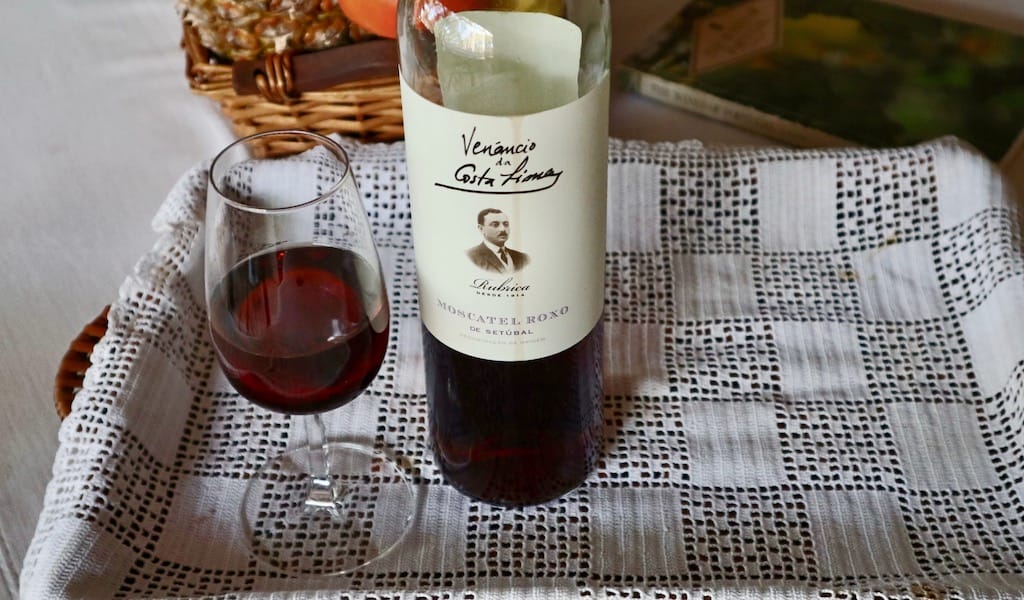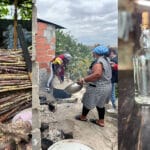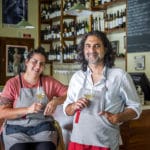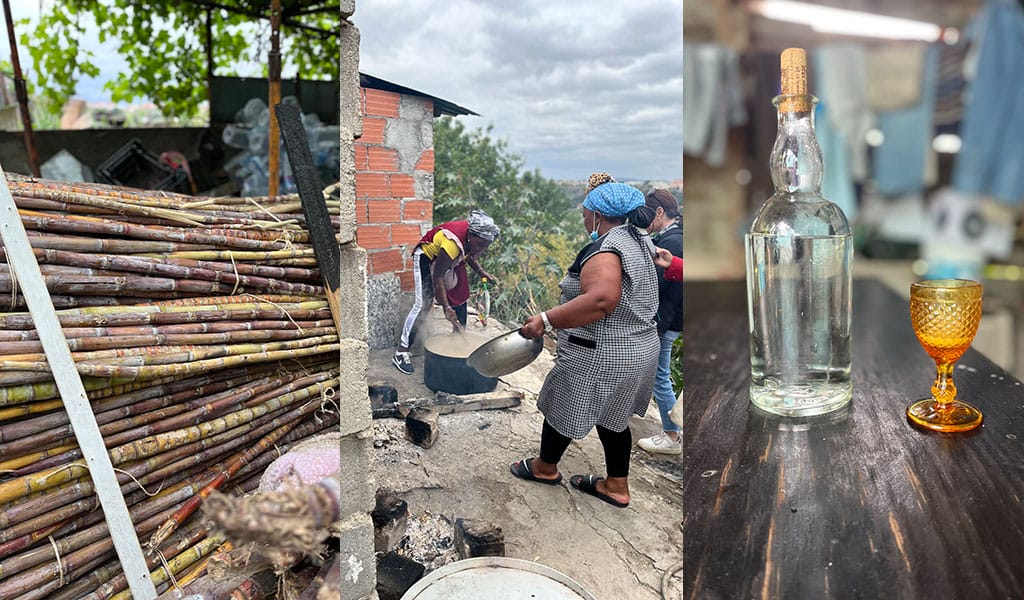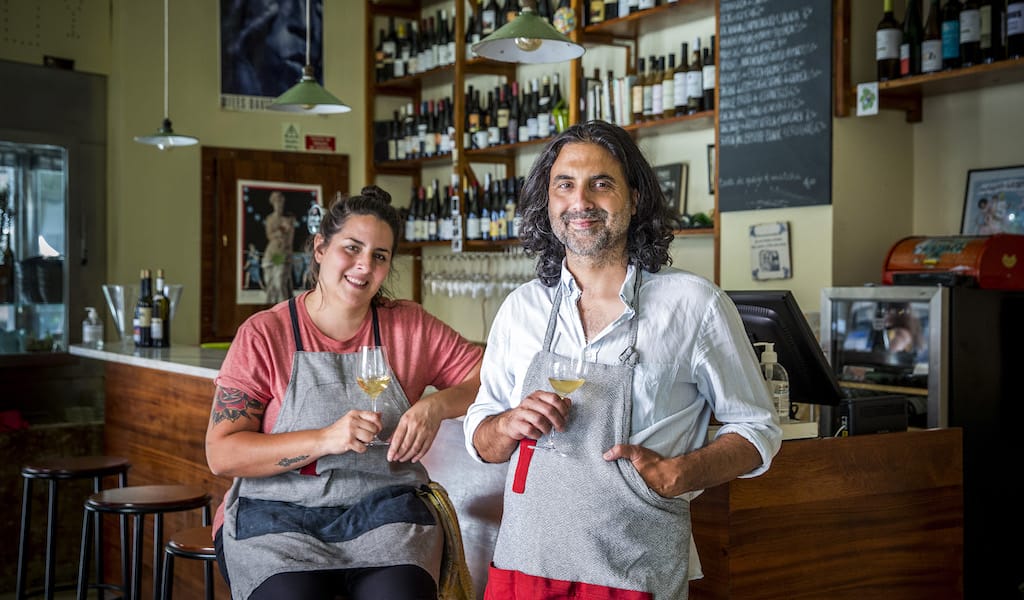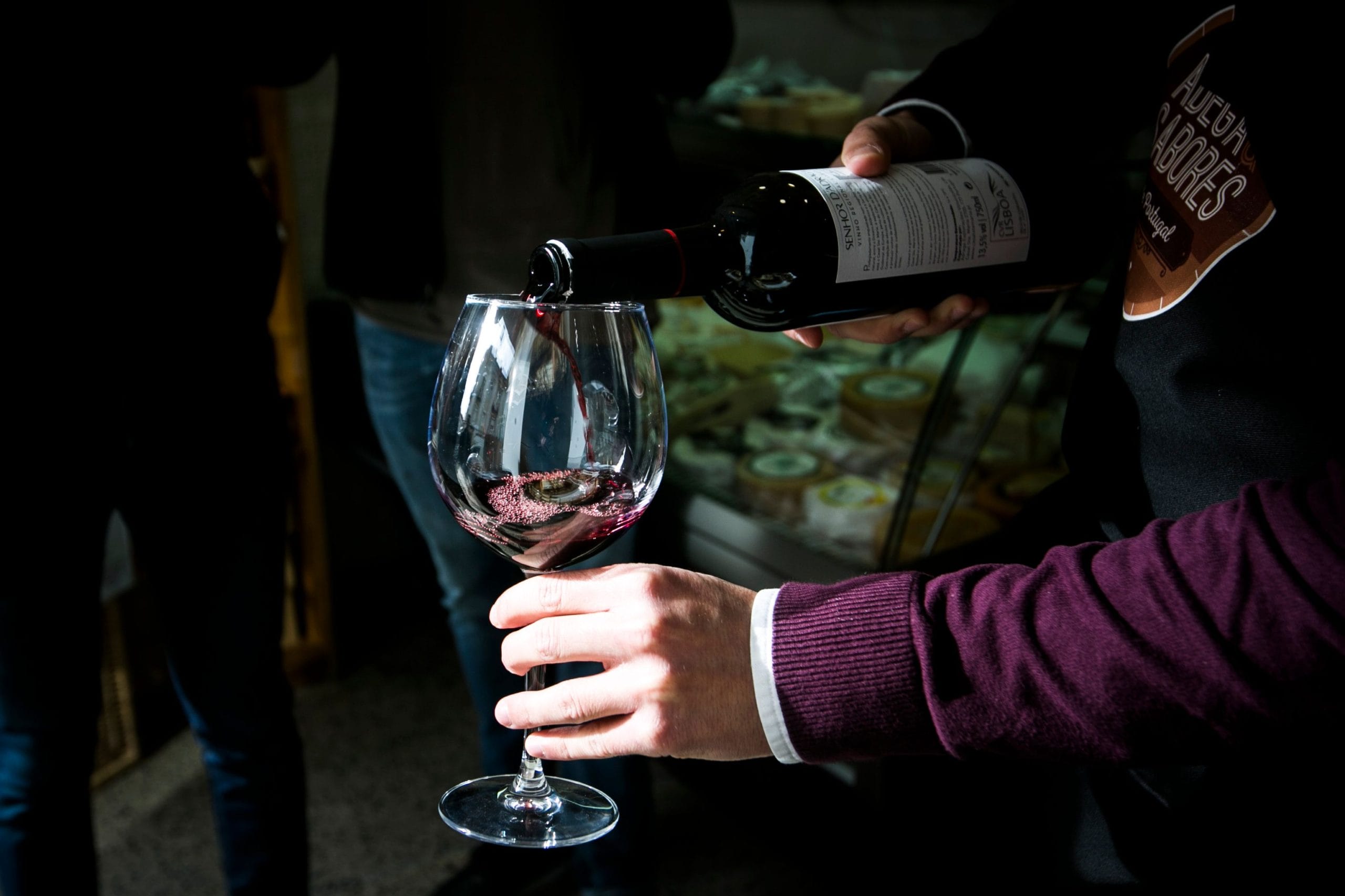Port wine and Madeira wine are well-known Portuguese fortified varieties, but Moscatel de Setúbal remains a perfect stranger for many visitors. Which is a shame, since this wine – complex and elegant, with a delicate sweetness and rich flavor – is one of Portugal’s great vinous pleasures. In Lisbon and the south bank, it’s common to enjoy a small glass of Moscatel (muscatel) as either an aperitif (chilled) or a digestive.
The fertile land of Setúbal, a peninsula south of the city of Lisbon, has long-been a wine producing region. It is not known exactly when Moscatel – which is made from the Muscat grape, although the name also refers to the grape itself – was first made here, but it is generally accepted that the Phoenicians and Ancient Greeks were trading the wine in the estuary of the Sado River. It eventually became a drink that was popular in the courts of Western European monarchs, from Richard II in England to Louis XIV in Versailles.
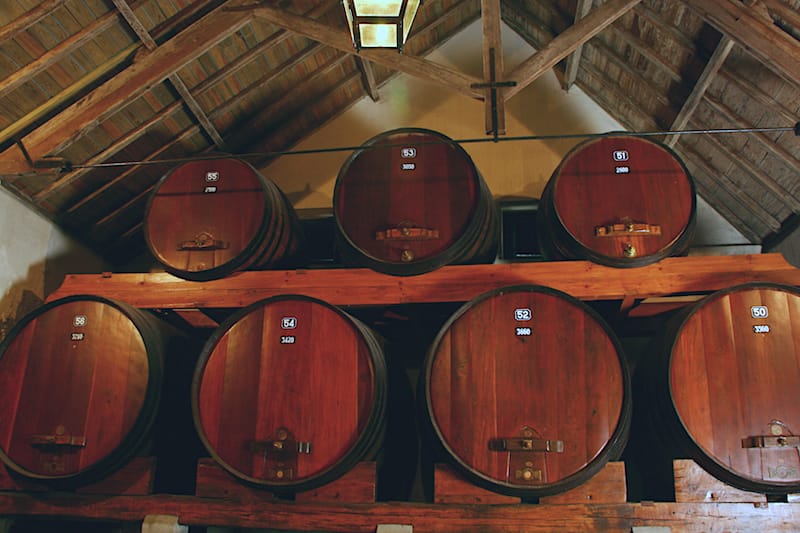
One of the oldest producers in Setúbal is Venâncio da Costa Lima. Operating since 1914, it is home to some of the most award-winning varieties of Moscatel. We find the winery on the roadside in Palmela town’s Quinta do Anjo, less than an hour’s drive south of Lisbon, on a street bearing its own name.
“Originally, this was a warehouse for the wholesale of olive oil, cereals and wine,” explains Joana Vida, the winery’s managing director and a descendent of the Costa Lima family. “Eventually it moved to just producing wine.” In the 1940s, Venâncio, the Costa Lima patriarch, began producing his own wine with grapes from the region. These were mostly table wines that were sent to Lisbon, Alentejo or Margem Sul. The winery was eventually inherited by his six nephews, one being Joana’s grandfather. Now, she and her three cousins run the company as its fourth generation, keeping the name of the patriarch alive and well after surviving many changes in the wine business.
The two varieties of Muscat used to produce the Setúbal DOC have ancient origins, and are known for their sweet and aromatic features. There is the Moscatel de Setúbal, also known as Moscatel Graúdo or Moscatel de Alexandria, along with the Moscatel Roxo (Muscat Rose), which has its roots in Greece. It is considered a mutation of the Moscatel Galego found in Portugal’s Douro and Spain’s Galicia regions. Both the Graúdo and Roxo grapes adapted remarkably to the climate in Setúbal, and the quality of the area’s muscatel was recognized with the DOC seal early on in 1907.
Despite the wine’s pedigree, things have not always been so easy for Muscatel makers. Only a few decades ago, the Moscatel Roxo was almost extinct in the region. Only 20 years ago, there was maybe a total of 40 hectares of this grape planted in the world. “It’s a difficult grape with low productivity and prone to disease,” Joana tells us. But today, the Setúbal wine region has 50 hectares planted with Moscatel Roxo. “Fifty hectares is not much, but it is a lot compared with what we had,” Joana says, holding a small glass of the precious wine.
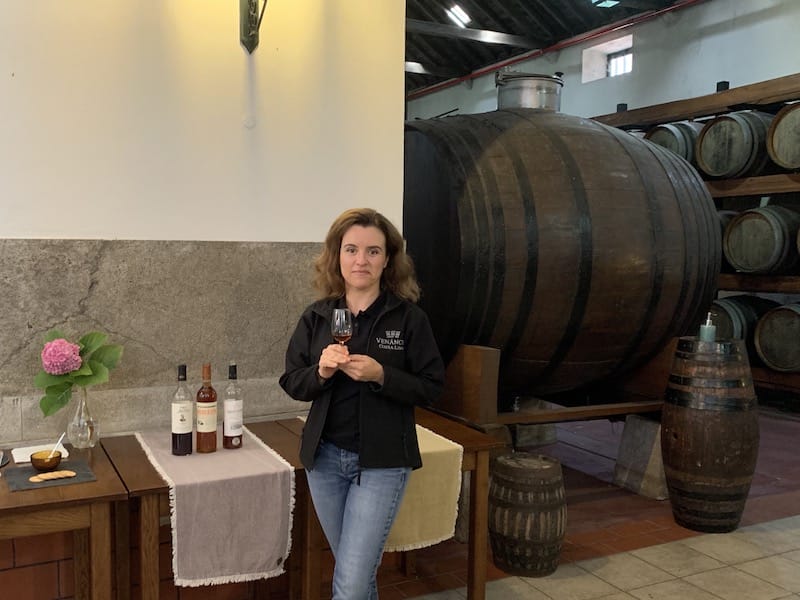
These days, Venâncio da Costa Lima exports to Europe as well as to Brazil and the United States. And wine tourists are discovering the delicious wines south of Lisbon. “We offer a full visit of our winery, not just the cellar. We explain how wine is made, and how Moscatel is produced,” Joana says. Tastings are paired with excellent local products, including Azeitão sheep’s milk cheese, jams and orange cake from this area. The century-old ceramic tanks in the warehouse are still in use and quite a sight. Old presses and other relics of the past can be found throughout the winery as well, including copper stills once used to make aguardente vínica (a type of brandy) for winemaking.
One of the oldest producers in Setúbal is Venâncio da Costa Lima. Operating since 1914, it is home to some of the most award-winning varieties of Moscatel.
Joana studied enology and first started working for another wine company for a few years before deciding to come home 14 years ago. In 2011, just four years after her arrival at Venâncio da Costa Lima, the label drew recognition for its Moscatel. They were the only Portuguese entry at the international Muscats du Monde competition, where producers from Italy, Spain, South Africa, Chile and France presented their Muscat wines. “Surprisingly, our Muscat, the only Portuguese, was the winner. That made our name very popular in Portugal, and internationally too!” Joana says. Since then, they have won many more awards, including “Best Muscat” once more at Muscats du Monde.
Joana gives us a run-down of the process behind making Moscatel. The grapes are pressed with their skin, and everything except the stems go into a stainless-steel tank, where the fermentation starts. From here, every producer has their own style, Joana says. At Venâncio da Costa Lima, after 24 hours of fermentation, they add aguardente vínica to stop the anaerobic process. Instead of adding anything of its own, the aguardente helps to extract the natural aromas that are in the grape and infuse them into the wine.
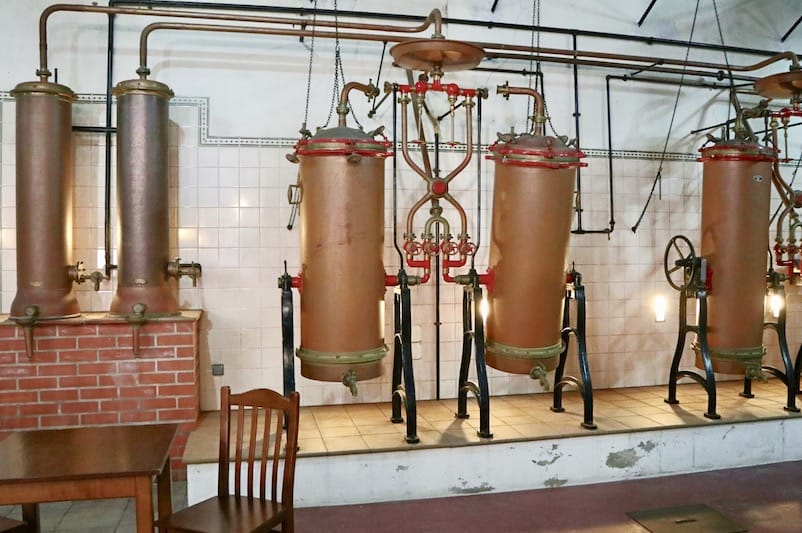
After the fermentation, the alcohol and must (grape residue) remain in the tank for around five to six months, during which Fausto Lourenço, the label’s winemaker, checks in on them. The stainless-steel tanks are opened in the spring, and the Moscatel is transferred to wooden barrels to age for another one-and-a-half years, at least. That is the youngest variety of Moscatel de Setúbal, whereas others can be aged anywhere from 10 to 50 years. A 10-year Setúbal DOC will be a blend of several years, in which the youngest is aged 10 years.
The label’s reds and whites are also best-sellers from their region’s sandy soils, growing castelão, fernão pires, aragonês, and a bit of verdelho and syrah. Still, the most famous is the dessert wine. “It is the jewel in the crown of Venâncio da Costa Lima,” Joana says. “The one that differentiates us from the other producers of this area and even from other countries.”
In the 1930s, French critic Léon Douarche had this to say about Moscatel de Setúbal: “It’s the sun in a bottle.” We are in complete agreement.
Published on November 12, 2021
Related stories
May 4, 2022
Food Tours | By Culinary Backstreets
Food ToursJoin us for a deep dive into Cape Verdean life in Lisbon, including visits to urban farms, a feast of cachupa, demonstrations, artisanal grog, live music and more in support of a local neighborhood association. The Cape Verdean community of Lisbon is vast and diverse, contributing much to the development of the city as we…
May 25, 2021
LisbonA decade ago Lisbon was a very different city, and the riverfront Cais do Sodré neighborhood was dominated by Mercado da Ribeira, the central market, and office buildings. No Time Out Market, no hipster cafés or trendy restaurants and bars, and hardly any tourists. In 2011, Café Tati opened in an 18th-century building behind the…
May 5, 2021
Lisbon | By Culinary Backstreets
LisbonQuick bite: Join our Wine Club, to meet the winemakers, Tiago Teles and Antonio Marques da Cruz, and taste their wines paired with delicious snacks in an open-air setting that’s both social and safe. This event is offered exclusively for the OIS community with limited space. A quick survey of Lisbon’s shops, restaurants, bars and…







































